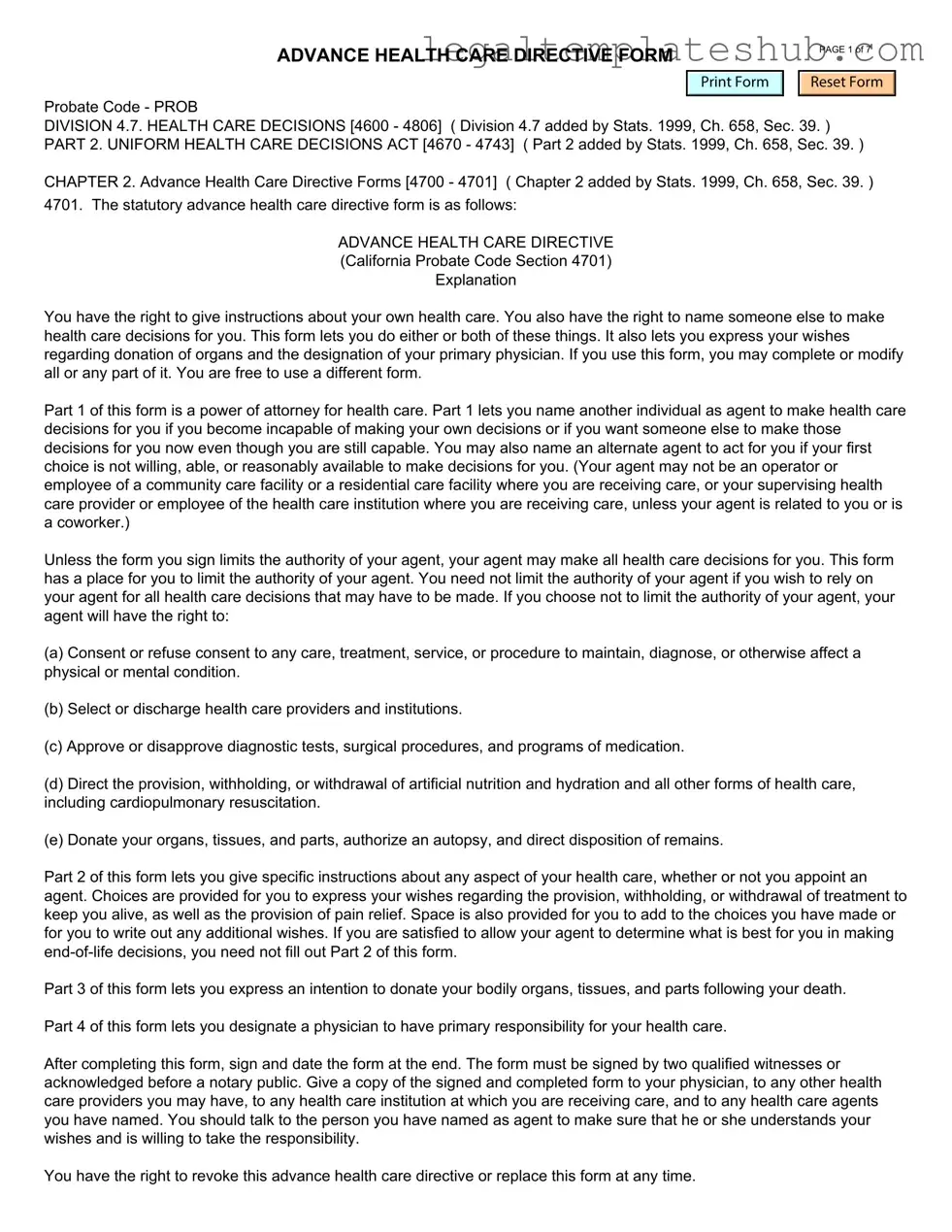Blank California Advanced Health Care Directive PDF Form
The California Advanced Health Care Directive is a legal document that allows individuals to outline their healthcare preferences in case they become unable to communicate those wishes. This form enables you to appoint a trusted person to make medical decisions on your behalf and specify your treatment preferences. Understanding and completing this directive is essential for ensuring your healthcare choices are respected when it matters most.
Ready to take control of your healthcare decisions? Fill out the form by clicking the button below.
Access Editor
